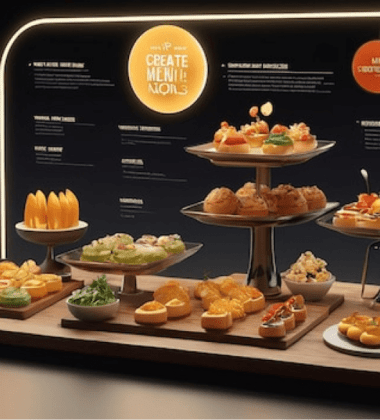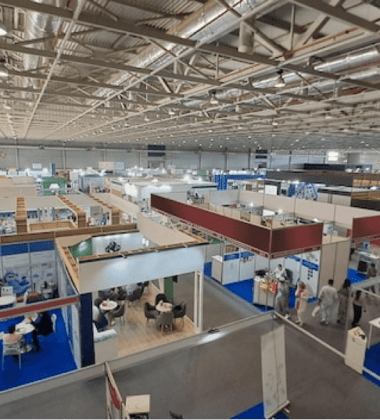Natural flavors are everywhere—from sparkling waters to protein bars and even in artisan-style snacks claiming “clean ingredients.” But what does “natural” really mean in the food and beverage industry? At the Food and Beverage Expo USA, the conversation around natural flavors is evolving from marketing jargon to molecular innovation. Brands are not only displaying their latest product lines—they’re also giving us a glimpse behind the curtain of modern food science.
In this trend report, we take a closer look at the truth about natural flavors, uncovering how food scientists, chefs, and product developers are redefining taste with transparency, technology, and traceability in mind. Whether you’re formulating the next great beverage or rethinking an existing product line, these developments matter more than ever.
What Are “Natural Flavors,” Really?
According to the U.S. FDA, natural flavors are derived from substances found in nature—plants, animals, or fermentation processes. But that definition leaves plenty of room for interpretation. A flavor derived from a natural source may still undergo heavy processing, distillation, and recombination in a lab.
For consumers, the term “natural” suggests health, purity, and authenticity. For scientists, it’s a regulatory classification that doesn’t necessarily correlate with simplicity or transparency. This gap between perception and reality is a key focus of this year’s Food and Beverage Expo USA.
The Demand for Transparency Is Growing
In 2025, clean labeling is no longer a niche demand—it’s a market standard. Consumers, especially Gen Z and Millennials, are asking tougher questions about the products they consume. They want to know:
- Where did this flavor come from?
- Is it truly “natural,” or just legally classified as such?
- What other ingredients were used in processing?
As a result, exhibitors are being pushed to offer not just flavorful experiences but traceable and transparent sourcing stories. Booths that demonstrate this level of integrity are drawing more attention than ever.
Food Scientists Are Becoming Storytellers
One notable shift at the Food and Beverage Expo USA is the rise of scientist-led brand storytelling. Labs that once worked behind the scenes are now stepping into the spotlight.
Brands like FlavorCore Labs, BioPalate, and TerraTaste Botanicals are creating interactive installations that:
- Showcase the molecular pathways used to extract natural compounds
- Let attendees compare synthetic and natural flavors side-by-side
- Educate visitors on how fermentation and enzymatic reactions can yield cleaner, more authentic profiles
These brands are no longer hiding their process—they’re using it as a selling point.
Innovations That Are Redefining “Natural”
Let’s look at the flavor engineering trends showcased at this year’s expo:
1. Fermentation-Driven Flavor Production
Startups are now using microbial fermentation to replicate flavors previously sourced from rare fruits or endangered plants. By feeding microorganisms specific substrates (like sugars or amino acids), these companies can produce flavor molecules identical to those found in nature—without the agricultural impact.
Example:
- A vanilla flavor derived from fermented rice husks offers the same aromatic profile as Madagascar vanilla, but with more sustainable production and reduced allergens.
2. Molecular Gastronomy Meets Commercial Formulation
What began as a fine-dining trend has found its way into mass-market R&D. Food technologists are exploring molecular pairings to recreate entire sensory experiences—such as the aroma of toasted marshmallow or the sharp tang of pickled mango—without artificial enhancers.
Example:
- A beverage brand used a combination of lactone molecules and natural esters to recreate the tropical aroma of ripe pineapple with zero added sugar.
3. Botanical Reclamation
Brands are going back to the roots—literally. Rather than rely on flavor houses, many are sourcing directly from local farmers and reclaiming indigenous botanicals to create flavor systems with cultural depth.
Example:
- One exhibitor introduced a new line of cold brews infused with baobab, tamarind, and guava—sourced directly from African farming cooperatives and minimally processed to preserve native flavor signatures.
The Risk of Overpromising
Despite the innovation, there’s growing scrutiny around the use of the term “natural.” Legal challenges have increased in both the U.S. and European markets, especially when “natural flavors” are paired with claims like:
- “No artificial ingredients”
- “Made from real fruit”
- “Farm fresh taste”
For R&D and marketing teams alike, it’s important to align sensory innovation with regulatory compliance. Overpromising, even unintentionally, could damage consumer trust and lead to expensive product reformulations or legal exposure.
What R&D Teams Are Doing Differently
The role of product developers has expanded. They’re not just formulating flavors—they’re collaborating with procurement, compliance, marketing, and even sustainability leads to ensure that every component of the flavor system aligns with evolving consumer expectations.
At the Food and Beverage Expo USA, several behind-the-scenes panels revealed a few best practices:
- Ingredient traceability software is being adopted earlier in the formulation phase to validate “natural” sourcing claims.
- AI flavor-mapping tools are helping teams predict how “clean” flavors will be perceived across different demographic segments.
- Cross-functional tasting panels now include marketing and legal reviewers to ensure every claim is justified and every flavor is verifiable.
Where We’re Headed: The Next Phase of “Natural”
Looking ahead, the natural flavor conversation will become increasingly intersectional—merging sustainability, health, culture, and transparency. Expect to see:
- Smart labeling technology (such as QR codes that link to sourcing stories)
- DNA fingerprinting of raw ingredients for fraud prevention
- Consumer-led flavor development based on live feedback loops and voting platforms
As taste continues to evolve beyond the tongue—into the realms of psychology, technology, and global supply chains—brands that lead with transparency will outperform those that simply market buzzwords.
Key Takeaways for R&D and Product Teams
- Redefine “natural” internally. Make sure your team understands the regulatory, technical, and consumer meanings of the term.
- Tell the sourcing story. Transparency is a competitive advantage, not a liability.
- Invest in sensory R&D. Use expos as laboratories—not just launchpads.
- Bridge the gap with marketing. Ensure all flavor claims are clear, compliant, and supported by your development process.
- Prepare for deeper questions. Gen Z and B2B buyers alike are asking about molecular processes, carbon impact, and social sourcing—have your answers ready.
Final Thoughts
The Food and Beverage Expo USA is no longer just a showcase of what’s next in flavor—it’s a battleground for what’s true. As consumer trust becomes the most valuable currency in the industry, brands that invest in flavor integrity—at the molecular, cultural, and communicative level—will be the ones leading the future.
The truth about natural flavors is complex, but it doesn’t have to be opaque. With the right mix of science, storytelling, and transparency, today’s product developers can build products that satisfy both the palate and the conscience.





